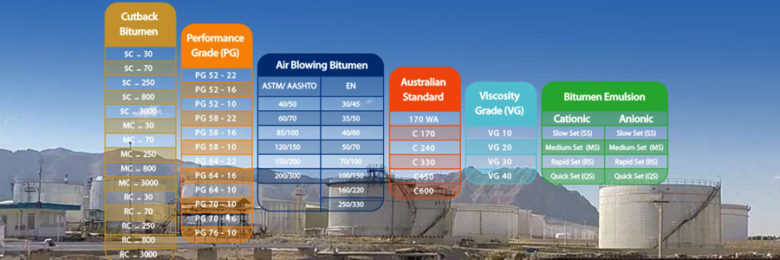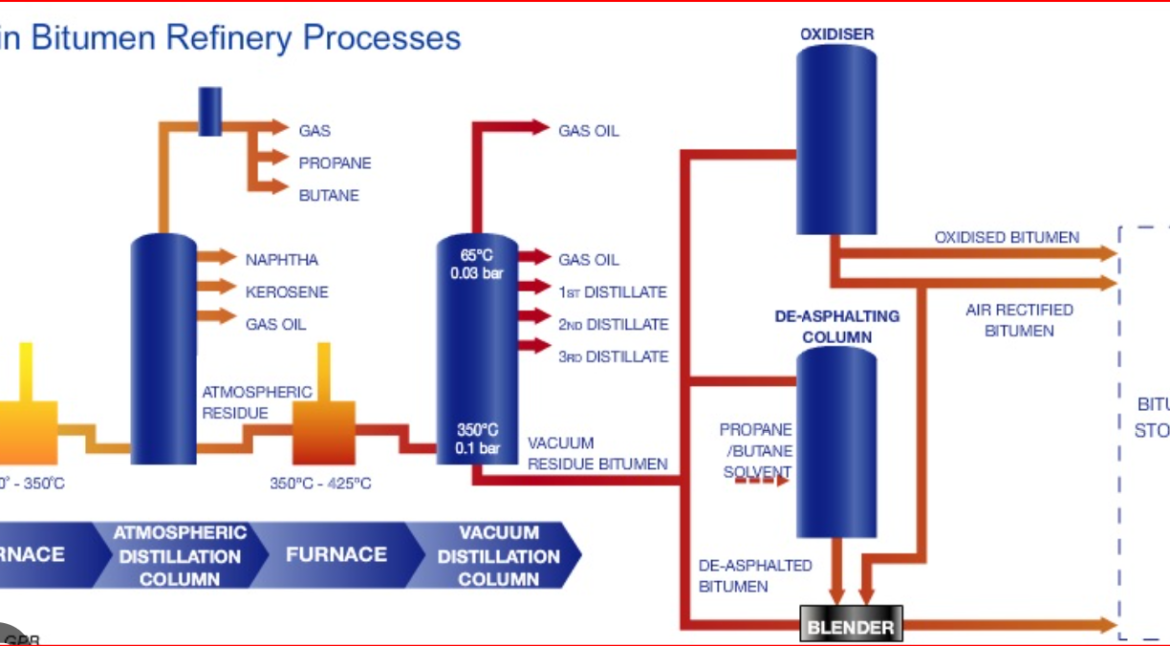Blown bitumen grades or Oxidized Bitumen are produced by passing air through the penetration grades. This process gives the bitumen more rubbery properties than its original formula and they are simply harder bitumen. Hard bitumen under controlled temperature conditions is widely used as an anti-slip layer compound in the piling…
Bitumen emulsions are usually dispersions of minute droplets of bitumen in water and are examples of oil-in-water emulsions. The bitumen content can be varied to suit different requirements and is typically between 30% and 70%. The primary objective of emulsifying bitumen is to obtain a product that can be used…
Cutback Bituman is made by reducing the viscosity of and ordinary bitumen by adding mostly petroleum type solvent. Cutback Bitumen are used because their viscosity is lower than that of neat asphalt and can thus be used in low temperature applications. After a cutback is applied the solvent evaporates away…
Performance Grade (PG) bitumen is bitumen which is graded based on its performance at different temperatures. The Long-Term Pavement Performance(LTPP) has given certain algorithm to calculate the temperature of the pavement based on the temperature of the air above. From this, the highest and the lowest temperatures of the pavement…
The properties of bitumen for roadmaking are specified in AS 2008: Residual Bitumen for Pavements. This Australian Standard classifies and specifies the properties of conventional pavement-grade bitumens most widely used in Australia.
Viscosity grading can be done on original (as-supplied) asphalt binder samples (called AC grading) or aged residue samples (called AR grading). The AR viscosity test is based on the viscosity of aged residue from the rolling thin film oven test. With AC grading, the asphalt binder is characterized by the…
The penetration grading system was developed in the early 1900s to characterize the consistency of semi-solid asphalts. Penetration grading quantifies the following asphalt concrete characteristics: Pentration Grade Bitumen is Bitumen classified using the penetration property. Penetration grading’s basic assumption is that the less viscous the asphalt, the deeper the needle…
Standardizing Bodies In different regions and countries, different Standards and Grading systems are used for determining the quality of petroleum bituminous Binders. The most recognized standards for petroleum bitumen are published by
Of the wide variety of crude oils commercially available, only a limited number are considered suitable for producing bitumen of the required quality in commercial quantities. In general, these are heavy crude oils with a high sulphur content. In modern, integrated refineries, it is common practice to blend multiple crude…
Known for its adhesive and cohesive assets, bitumen is mostly utilized in the construction industry. Bitumen is applied on road paving because it is viscous when hot, but solid once it cools down. Therefore, Bitumen operates as the binder/glue for pieces of the aggregate.











